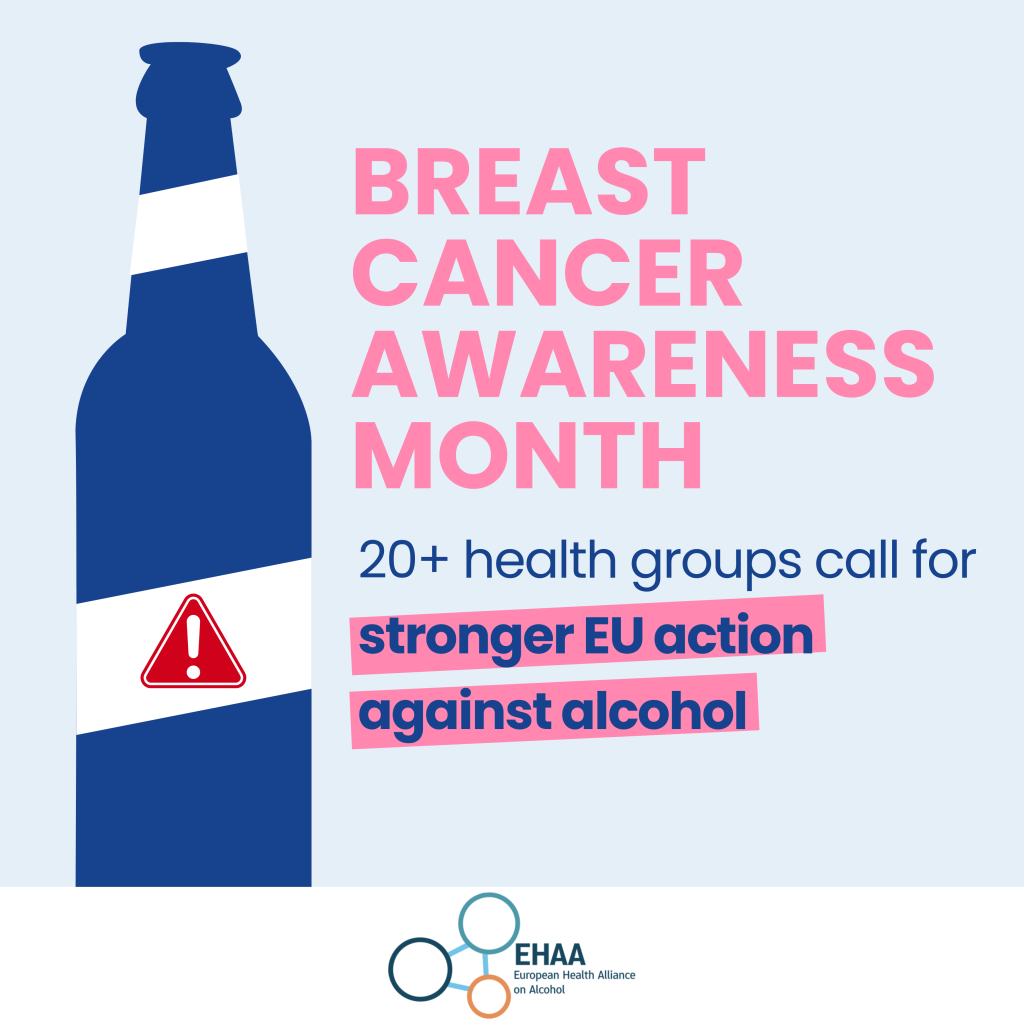
Impact of Breast Cancer Risks Posed by Alcohol
At present, breast cancer continues to be one of the most common forms of cancer around the globe and one of the leading causes of cancer deaths. In the European Union (EU), there were an estimated 379,000 breast cancer cases in 2022 [1], contributing significantly to the EU’s overall cancer incidence of approximately 2.7 million cases [2]. Globally, there were over 666,000 breast cancer deaths in 2022, a figure that is expected to increase to 1.06 million by 2045 [3].
Decades of robust science have clearly established the link between alcohol and breast cancer. Alcoholic beverages are classified as a group one carcinogen according to the International Agency for Research on Cancer (IARC) [4], and alcohol consumption is known to increase female breast cancer risk even for women who consume only one drink per day [5]. The breast cancer risk presented by alcohol is independent of beverage type, given that ethanol is the causal agent. Alcohol consumption causes breast cancer with a dose-dependent increase in risk, and the World Health Organisation (WHO) considers that no level of alcohol consumption is safe [6].
Breast cancer is one of 7 types of cancer [7] that carry increased risk due to alcohol consumption [8], contributing to the estimated 239,530 annual deaths in the EU that are attributable to alcohol (2019 figure).
Raising Awareness: Enhancing Breast Cancer Prevention
Across Europe, breast cancer incidence among women is rising, and alcohol consumption is a key driver of this trend. Yet, alcohol industries have increasingly targeted women with marketing strategies [9] featuring products like “Mommy wine,” “pink gin,” and “light sangria,” often using feminine branding such as pink labels and cursive fonts. This targeted advertising, along with the reduction of social taboos around women drinking, has contributed to a rise in heavy alcohol consumption among women, who tend to be unaware of the risks to their health [10].
In light of the breast cancer risks posed by alcohol consumption and given that an estimated 40% of all cancers are considered preventable, the EHAA affirms that there is no threshold without risk, and that reducing alcohol consumption is the most effective way to lower harm. Dedicated efforts are required to sustain the fight against breast cancer, raise awareness of the breast cancer-related dangers posed by even consuming small amounts of alcohol, and highlight alcohol use as a public health concern.
A Call for Continued Policy Action
In addition to awareness-raising, robust policy measures are required to help prevent breast cancer cases attributable to alcohol. Marking the occasion of Breast Cancer Awareness Month, the EHAA calls on European and national policymakers to:
- Establish mandatory health warnings on alcoholic beverages clearly stating the cancer risks posed by alcohol;
- Promote gender-responsive and gender sensitive policies to reduce alcohol consumption;
- Ensure EU-level support for national campaigns aimed at making citizens aware of the fact that alcohol consumption increases the risk of developing breast cancer as well as other cancer types;
- Achieve all prevention-related objectives of Europe’s Beating Cancer Plan;
- Work towards the full implementation of the WHO Global Action Plan on Alcohol 2022– 2030.
EHAA and its members stand ready to collaborate with all stakeholders, including the EU, member states and the WHO, on effectively addressing the breast cancer risks posed by alcohol consumption and improving breast cancer prevention, benefiting citizens and society at large.
About the European Health Alliance on Alcohol
The European Health Alliance on Alcohol (EHAA) is a coalition of European health organisations representing over 1.7 million medical professionals and healthcare providers. We work tirelessly to reduce the burden of alcohol-related harm across Europe, and for European citizens, through
evidence-based policy advocacy, professional education, and direct engagement with decision-makers. EHAA was formed to ensure our collective voice is heard, to highlight the serious health consequences of alcohol – such as various cancers, liver disease, and emergency department admissions – and to advocate for stronger, evidence-based public health policies.
References:
- European Cancer Information System (ECIS). Estimates of cancer incidence and mortality in 2022, for all countries.
- European Cancer Information System (ECIS).
- International Agency for Research on Cancer (IARC). Cancer Tomorrow.
- List of Classifications.
- Alcoholic beverage consumption and female breast cancer risk: A systematic review and meta‐analysis of prospective cohort studies (2024).
- No level of alcohol consumption is safe for our World Health Organization (WHO).
- The 7 types of cancer are: breast, colorectum, liver, oesophagus, larynx, pharynx, and oral
- US Department of Alcohol and Cancer Risk.
- M. Atkinson, B.R. Meadows, C. Emslie, A. Lyons, H.R. Sumnall. ‘Pretty in Pink’ and ‘Girl Power’: An analysis of the targeting and representation of women in alcohol brand marketing on Facebook and Instagram. International Journal of Drug Policy. 2022 Mar;10
- L’Hôte M, Rubio I, Erba P, Kiss A (2024) Women C Cancer: More than 12 million reasons for Policy Action Paper. European Cancer Organisation (ECO)

